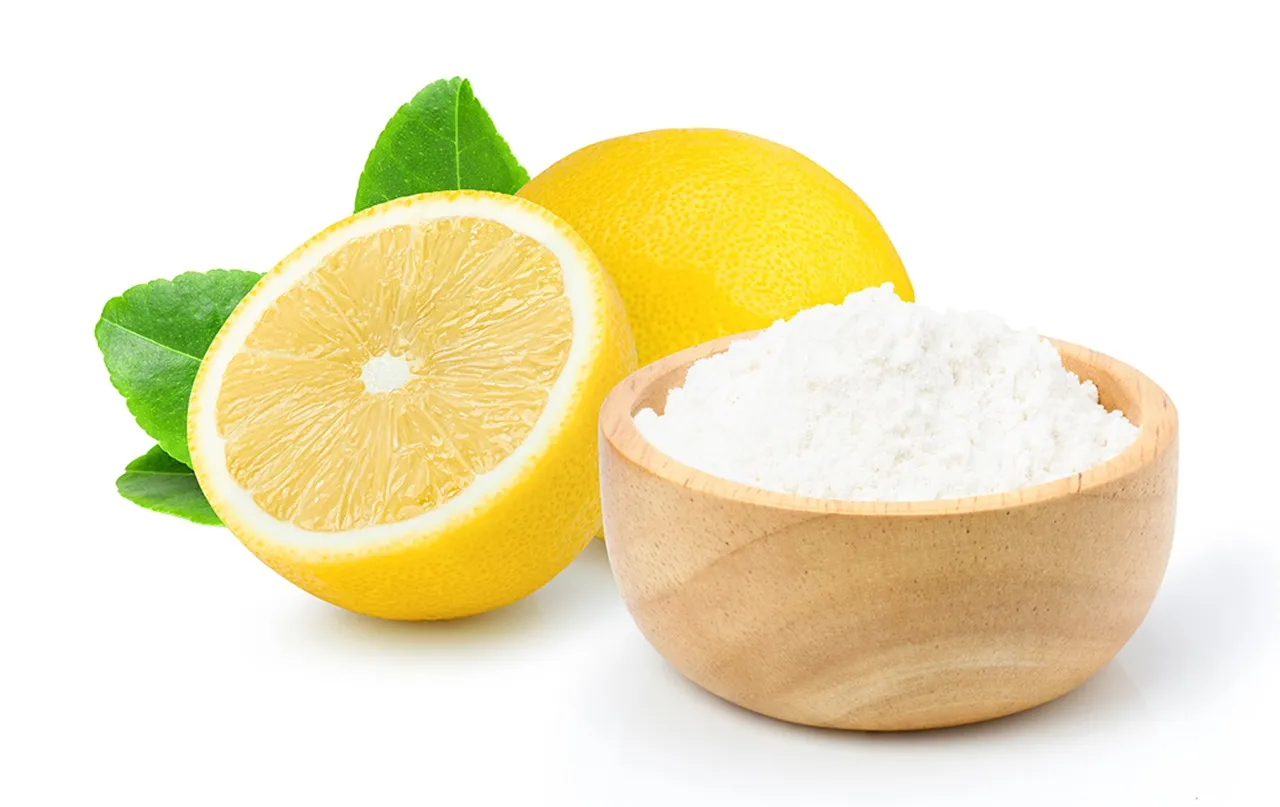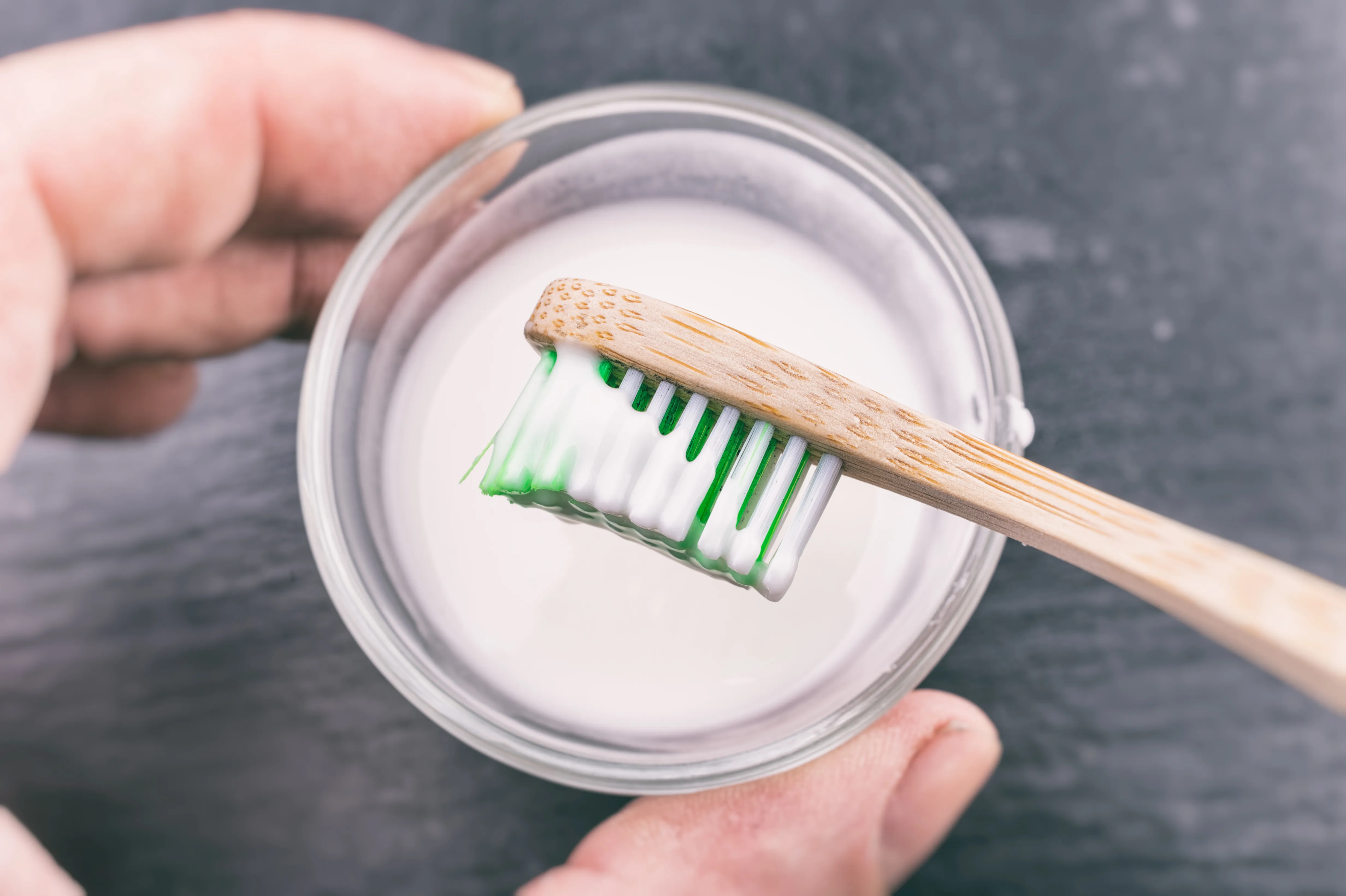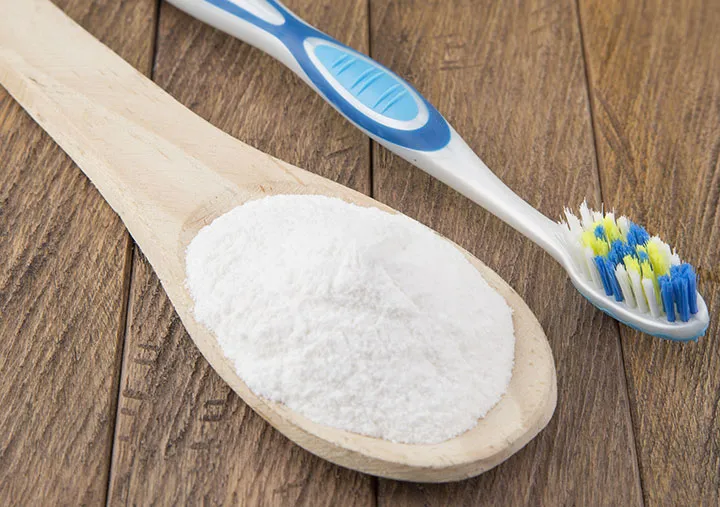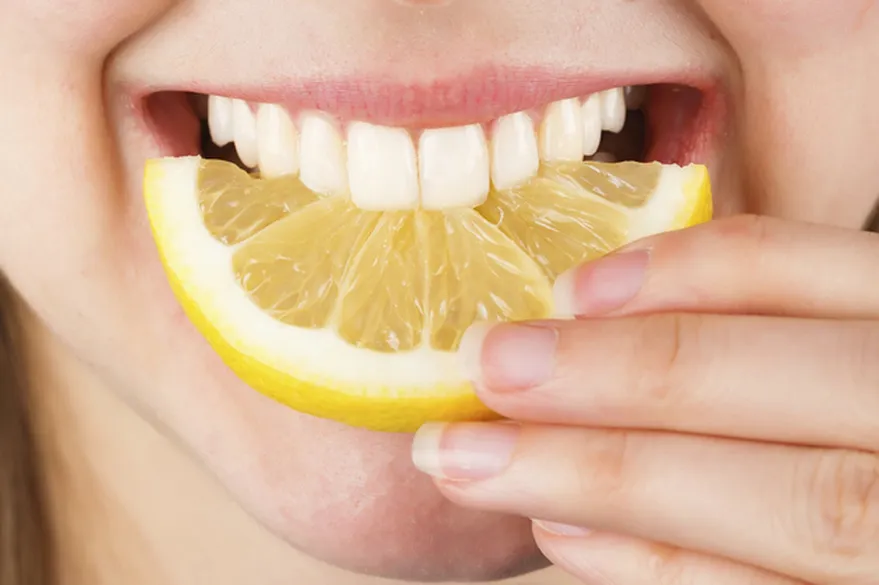The Power of Baking Soda and Lemon Juice for Teeth Whitening
Achieving a brighter, whiter smile is a common goal, and many people turn to DIY solutions like baking soda and lemon juice for teeth whitening. This natural approach has gained popularity due to its accessibility and perceived effectiveness. However, it’s crucial to understand how these ingredients work, their potential benefits, and the risks involved before incorporating them into your oral hygiene routine. This guide will delve into the science behind baking soda and lemon juice, providing a comprehensive overview to help you make informed decisions about your teeth whitening journey. Before you start any new oral hygiene routine, it’s important to consult with a dentist.
How Baking Soda Works
Baking soda, also known as sodium bicarbonate, is a mild abrasive and a natural cleanser. Its effectiveness in teeth whitening stems from its ability to gently scrub away surface stains. The granular texture of baking soda helps dislodge plaque and debris, contributing to a cleaner mouth. It’s important to use baking soda cautiously, as excessive abrasion can potentially harm tooth enamel. Its alkaline nature also helps neutralize acids in the mouth, creating a less favorable environment for bacteria that cause decay. Choosing the right abrasive strength is key to effective cleaning without causing damage.
Baking Soda’s Abrasive Action

The abrasive nature of baking soda is its primary mechanism for teeth whitening. When used correctly, the tiny particles of baking soda can help remove surface stains caused by food, drinks, and smoking. The abrasion acts like a gentle polishing, scrubbing away these stains and revealing the natural whiteness of your teeth. However, it’s important to emphasize the ‘gentle’ aspect; aggressive scrubbing can erode enamel, leading to increased sensitivity and potential dental problems. Careful and controlled application is essential to leverage baking soda’s abrasive qualities safely and effectively. Always rinse thoroughly after use.
Baking Soda and Plaque Removal
In addition to stain removal, baking soda aids in plaque removal. Plaque, a sticky film of bacteria, is a major contributor to gum disease and tooth decay. The abrasive action of baking soda helps to disrupt and remove plaque buildup on the tooth surfaces. Regular use of baking soda, coupled with proper brushing and flossing, can improve overall oral hygiene and promote healthier gums. Removing plaque is a crucial step in preventing dental issues and maintaining a brighter smile. The key is to incorporate baking soda as part of a comprehensive oral care routine.
The Whitening Effects of Baking Soda
The whitening effects of baking soda are primarily due to its ability to remove surface stains. It doesn’t change the inherent color of your teeth; instead, it removes the discoloration caused by external factors. This can lead to a noticeable improvement in the brightness of your smile. Baking soda’s mild abrasiveness helps to gently polish the tooth surface, lifting away stains from coffee, tea, and other substances. The results may vary depending on the severity of the stains and the frequency of use. Consistent, careful use is more effective than aggressive, infrequent scrubbing. (Image: baking-soda-closeup.webp)
How Lemon Juice Works

Lemon juice, due to its high citric acid content, offers a different approach to teeth whitening. Citric acid acts as a natural bleaching agent. However, its strong acidity raises concerns about potential damage to tooth enamel. While it can effectively remove stains, it also has the potential to erode the protective outer layer of the teeth. For this reason, using lemon juice for teeth whitening requires caution and should be done sparingly. The interaction between the acid and the enamel can lead to increased tooth sensitivity and long-term dental problems if used excessively. Dilution and careful application are crucial to mitigate these risks. (Image: lemon-juice-teeth.webp)
The Citric Acid’s Role
Citric acid, the primary component of lemon juice, is the active ingredient responsible for its whitening properties. This acid works by breaking down and dissolving stains on the tooth surface. The acidic nature of lemon juice can help to remove discoloration caused by various substances. However, this same acidity can also weaken and erode the tooth enamel. Therefore, the effectiveness of lemon juice in whitening must be weighed against its potential to harm the teeth. It’s important to approach this method with caution and to understand the risks involved before proceeding.
Lemon Juice and Stain Removal
Lemon juice is capable of removing certain types of stains from teeth. Its acidic nature can break down the compounds that cause discoloration. This makes it effective against stains from coffee, tea, and other sources. However, the same properties that make lemon juice effective for stain removal also pose risks to enamel health. The acid can erode the enamel, leading to increased tooth sensitivity and making the teeth more vulnerable to decay. Careful usage and monitoring for any signs of enamel erosion are critical. It should not be used as a primary method and always consult a dentist.
Potential Risks of Using Lemon Juice

The potential risks associated with using lemon juice for teeth whitening are significant. The high acidity can erode tooth enamel, leading to several dental issues. Enamel erosion can cause increased tooth sensitivity to hot or cold foods and drinks. It also makes teeth more susceptible to cavities. Over time, excessive lemon juice use can cause permanent damage to the enamel. The risk of irritation to soft tissues in the mouth is another concern. Because of these risks, it’s important to use lemon juice with extreme caution and to consider alternative, safer teeth whitening methods. If you experience any adverse effects, discontinue use immediately and consult a dentist. (Image: sensitive-teeth.webp)
Combining Baking Soda and Lemon Juice
Combining baking soda and lemon juice is a popular DIY teeth whitening method. The idea is to utilize the abrasive properties of baking soda with the bleaching action of lemon juice. However, this combination can also heighten the potential risks. The acidity of lemon juice can exacerbate the abrasive effects of baking soda, potentially causing more damage to the enamel. The effectiveness of this combination varies and may not be suitable for everyone. It’s crucial to understand the potential downsides before trying this method. Consult your dentist to make sure this is right for you. (Image: mixing-baking-soda-lemon.webp)
The Whitening Process
When baking soda and lemon juice are combined, the whitening process involves both mechanical and chemical actions. The baking soda’s abrasiveness helps to remove surface stains. The lemon juice then acts as a bleaching agent, further lightening the teeth. The mixture can be effective in removing certain types of stains and may lead to a brighter smile. However, the process needs to be approached with caution to minimize the risk of damaging the enamel. The duration and frequency of application also need to be carefully considered. Remember, the goal is a brighter smile without damaging your teeth.
Creating the Mixture

To create the mixture, you typically combine baking soda and lemon juice. The usual ratio is a small amount of baking soda mixed with just enough lemon juice to form a paste. It is crucial to ensure the mixture is not too acidic, as excessive acidity is detrimental to tooth enamel. Start with a small amount of each ingredient and mix gently. The consistency should be thick enough to adhere to your teeth but not so abrasive that it causes irritation. Consider the potential risks and take a conservative approach to the amount of lemon juice used. (Image: baking-soda-lemon-teeth-whitening.webp)
Application Guidelines
When applying the mixture, gently brush the paste onto your teeth, taking care not to scrub aggressively. Limit the contact time to a short duration, typically no more than a couple of minutes. After brushing, rinse your mouth thoroughly with water. Ensure that no mixture remains on your teeth. To minimize potential enamel erosion, avoid applying excessive pressure while brushing. Proper application is essential to reduce the risk of dental damage. Always be mindful of any signs of sensitivity or discomfort during or after application. Consider alternating with toothpaste and be conservative with the usage.
Whitening Procedure Steps
The steps for the whitening procedure should be followed carefully to maximize benefits and minimize risks. First, prepare the mixture by combining baking soda and lemon juice in the recommended ratio. Second, gently brush your teeth with the mixture, ensuring even coverage. Third, limit the application time to a couple of minutes. Fourth, rinse your mouth thoroughly with water to remove all traces of the mixture. Finally, assess your teeth for any increased sensitivity or other adverse effects. It is advisable to consult a dentist before starting this procedure. These steps are essential to effective and safe teeth whitening. (Image: brushing-teeth-with-mixture.webp)
Frequency of Use

The frequency of using baking soda and lemon juice for teeth whitening is a critical factor. Because of the potential for enamel erosion, it’s best to limit the use to once or twice a week, at most. Overuse can cause significant damage to the teeth. For those with sensitive teeth or any signs of erosion, it may be better to avoid this method entirely. Always monitor your teeth for any changes or signs of discomfort. Consider discussing an appropriate schedule with your dentist. It’s important to prioritize the long-term health of your teeth over quick whitening results.
Important Considerations
Before trying baking soda and lemon juice for teeth whitening, there are several important factors to consider. The health of your teeth and gums should be assessed before using this method. Those with existing dental issues should avoid using it without consulting a dentist. Understand the potential risks, including enamel erosion and increased sensitivity. Make informed decisions by evaluating all available information and weighing the potential benefits against the risks. If you experience any adverse effects, discontinue use and seek professional dental advice.
Sensitivity and Irritation
Increased tooth sensitivity and oral irritation are potential side effects of using baking soda and lemon juice for teeth whitening. Sensitivity can occur as the enamel erodes, exposing the underlying dentin. The acidic nature of lemon juice can also irritate the soft tissues of the mouth. If you experience any sensitivity, discontinue use immediately. Persistent irritation may require a dentist visit. Monitoring for signs of sensitivity and irritation is vital to maintaining good oral health. Choose gentle and conservative options to protect your teeth.
Enamel Erosion

Enamel erosion is a serious risk associated with using lemon juice for teeth whitening. The high acidity in lemon juice can weaken and dissolve the enamel. This can lead to increased tooth sensitivity, a greater risk of cavities, and permanent damage. Enamel erosion is irreversible, so it’s crucial to take preventive measures. Limiting contact time, diluting the lemon juice, and using the mixture infrequently can help reduce the risk. If you notice any changes in the appearance or sensitivity of your teeth, stop using the method immediately. Regular dental check-ups can help to identify and manage enamel erosion early.
Alternative Teeth Whitening Methods
There are numerous alternative teeth whitening methods available that may be safer and more effective than using baking soda and lemon juice. These alternatives range from professional treatments to over-the-counter products. Choosing the right method depends on your individual needs and preferences. Consider exploring all options and consulting your dentist to determine the best approach for achieving a brighter smile. It is important to focus on teeth whitening strategies that prioritize your overall oral health.
Professional Whitening Treatments
Professional teeth whitening treatments offer safe and effective ways to brighten your smile. These treatments, performed by a dentist, typically involve the use of high-concentration bleaching agents. They are generally more effective than DIY methods. Professional treatments can also address any underlying dental issues. The dentist can monitor the process and mitigate any potential risks. Depending on your needs, you can opt for in-office treatments or take-home whitening kits. It is a good idea to talk with your dentist. (Image: professional-teeth-whitening.webp)
Over-the-Counter Products
Over-the-counter teeth whitening products, such as whitening strips, gels, and toothpastes, are readily available. These products often contain lower concentrations of whitening agents compared to professional treatments. They can be an affordable option for mild discoloration. Ensure that the products you choose are approved by dental associations. Follow the product’s instructions carefully to avoid potential side effects, and always consult with your dentist to make the best choice for your teeth. Whitening toothpastes and mouthwashes can also help with stain removal and maintaining brightness.
Maintaining a Bright Smile
Maintaining a bright smile involves several steps to keep your teeth looking their best. Good oral hygiene is the foundation. Brush your teeth twice a day with fluoride toothpaste and floss daily. Regular dental check-ups and professional cleanings are also essential. Avoid or minimize foods and drinks that stain teeth, such as coffee, tea, and red wine. Consider using a whitening toothpaste or mouthwash for added benefits. By following these guidelines, you can enjoy a brighter and healthier smile for a long time. Remember, consistency and care are key to maintaining oral health.
